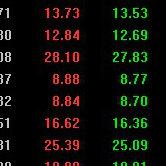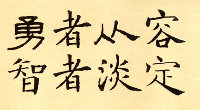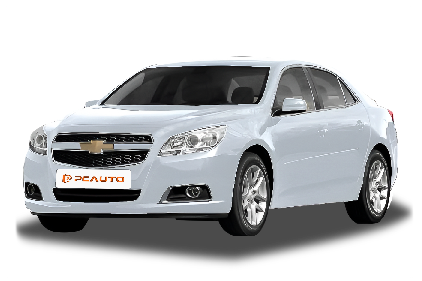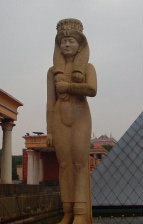Q
Do Malibus hold their value?
The Chevrolet Malibu holds its value moderately well in the Malaysian market, with used car prices varying significantly based on factors like model year, trim level, mileage, and service history. As an American midsize sedan, it doesn't quite match the local visibility of its Japanese or German rivals, but its solid chassis tuning and spacious interior still appeal to a specific group of buyers. When properly maintained and in good condition, a 3-5 year-old Malibu typically retains around 50-60% of its original value. It's worth noting that Malaysian consumers generally prefer fuel-efficient and reliable Japanese cars, which indirectly impacts the resale market for American models. We'd advise owners to keep complete service records and avoid extensive modifications—both go a long way in preserving residual value. Additionally, sticking with popular colors like white or silver can help when it comes time to sell. Overall, while the Malibu isn't a top performer in terms of depreciation, it remains a practical choice for buyers who prioritize comfort and value for money.
Special Disclaimer: This content is published by users and does not represent the views or position of PCauto.
Related Q&A
Q
How much is a 2014 Chevy Malibu transmission?
The cost of a transmission for a 2014 Chevrolet Malibu can vary pretty widely depending on a few key factors: what type of transmission it is (like the 6-speed automatic), whether it's brand-new, remanufactured, or used, and where you end up buying it—think dealership, third-party supplier, or even a junkyard for a used unit. Here in Malaysia, if you're looking at a brand-new OEM transmission, you're probably looking at a price tag between RM8,000 and RM15,000. If you go the remanufactured or used route, you might be able to bring that down to around RM4,000 to RM8,000. But remember, that price usually doesn't include the labor cost for installation, which can add another RM1,000 to RM2,500, plus any extra parts that might be needed along the way.
My advice? Head to a Chevrolet authorized service center or a reputable transmission specialist shop to get a solid, accurate quote—they’ll know exactly what you need. And don’t sleep on regular maintenance! Changing your transmission fluid every 60,000 to 80,000 kilometers can really help extend its life. If you start feeling rough shifts or delays when changing gears, get it checked out ASAP. Small issues can turn into big, expensive problems fast if you ignore them. Also, with Malaysia’s hot and humid weather, keeping an eye on your cooling system is crucial—transmissions hate overheating, so make sure that system’s in good shape to keep things running smoothly.
Q
How much does a used Malibu cost?
In Malaysia, the price of a used Chevrolet Malibu can vary quite a bit depending on factors like the car's age, mileage, condition, and specs. Generally, you're looking at a range of around RM60,000 to RM120,000. For example, models from 2016 to 2018 with 50,000 to 80,000 kilometers on the clock tend to go for about RM70,000 to RM90,000. The newer ones, from 2019 to 2021, might set you back over RM100,000. When buying a used car, it's a good idea to check the service records and accident history. Sticking with reputable used car dealers or certified platforms can also help protect your interests.
The Chevrolet Malibu, as a midsize sedan, has its fans thanks to its comfort and space. But here's the thing to note: American used cars in Malaysia can come with higher maintenance costs and parts might be a bit harder to source. So, it's smart to scope out the service situation at nearby repair shops beforehand. Also, Malaysia's used car loan policies usually let you borrow 70% to 90% of the car's appraised value. The interest rate depends on the bank and your credit score, so shopping around before you buy could save you some cash.
Q
What engine does a 2014 Chevy Malibu have?
The 2014 Chevrolet Malibu hits the Malaysian market with two solid engine choices: a 2.5-liter naturally aspirated four-cylinder and a 2.0-liter turbocharged four-banger. The 2.5L puts out around 197 horsepower and 253 Nm of torque, which is perfect for your everyday commute and city driving needs. On the flip side, if you're craving more punch, the 2.0L turbo steps things up big time with a meaty 259 horsepower and a healthy 353 Nm of torque – that one's for the drivers who like a bit more fun behind the wheel. Both engines are mated to a 6-speed automatic transmission, delivering smooth shifts and decent fuel efficiency, which is always a plus. For Malaysian buyers, the 2.5L makes the most sense for daily city runs, while the 2.0L turbo is your go-to if you spend a lot of time on the highway or enjoy the occasional long road trip. It's worth noting that turbocharging tech is pretty much the norm these days in modern cars – it's a smart way to squeeze more power without bumping up engine size, all while keeping fuel consumption in check. No wonder so many automakers are jumping on that bandwagon.
Q
How fast can a 2014 Chevy Malibu go?
The 2014 Chevrolet Malibu tops out at around 201 km/h (125 mph), though actual performance hinges on the engine under the hood. Over in Malaysia, you'll typically find it packing either a 2.5L four-cylinder or a punchier 2.0L turbo – that turbocharged mill definitely delivers the stronger kick. For Malaysian drivers, that kind of speed is more than enough for highway jaunts, but remember to keep an eye on local limits, which usually cap out at 110 km/h on the expressways.
Beyond straight-line speed, the 2014 Malibu earns props for its comfy suspension and roomy cabin, making it a solid pick for families. Fuel economy isn't too shabby either; the 2.5L version sips around 8.7 liters per 100 km in mixed driving. If you're scoping out a used one, do yourself a favor and check the engine service records and transmission condition. Running it hard at high revs over time can take a toll on the powertrain, and Malaysia's hot climate is tough on cooling systems too – so regular coolant changes are a must.
Q
How long can Malibu last?
The lifespan of a Chevrolet Malibu in Malaysia really boils down to how well you maintain it, your driving style, and the road conditions it's exposed to. Stick to the manufacturer's recommended service schedule—like getting the oil changed every 5,000 to 10,000 km and having key components inspected regularly—use genuine parts, and avoid aggressive driving, and you're looking at a solid 200,000 to 300,000 km or even 15+ years on the road. Malaysia's tropical heat can be tough on rubber parts like belts and bushings, as well as electrical components, so it's smart to shorten inspection intervals, pay extra attention to rust prevention, and try to park in covered spots to shield it from harsh sunlight and rain.
Under the hood, the Malibu's ECOTEC engine is pretty tried-and-true, and paired with either the 6-speed or 9-speed automatic transmission, it delivers a balanced level of reliability for a midsize sedan. That said, as it racks up the kilometers, keep a close eye on the cooling system and transmission fluid condition—those are key areas to watch. For Malaysian buyers, if you're scouring the used car market, post-2015 Malibus tend to hold up better over time thanks to more advanced direct-injection tech and improved anti-corrosion treatments. And making a habit of taking it to authorized service centers for computer diagnostics can help catch potential issues before they turn into big problems.
Bottom line? A car's longevity is *heavily* tied to its service history. Keeping complete maintenance records isn't just about extending its life—it'll also give your Malibu a much better resale value down the line.
Q
How long does a Malibu engine last?
The Chevrolet Malibu's engine typically lasts between 200,000 to 300,000 kilometers, depending on regular maintenance and driving habits. Malaysia's tropical climate can take a toll on the engine cooling system and rubber components, so it's advisable to replace coolant regularly and check hose sealing performance to extend engine life. Good maintenance practices like timely oil changes, using the right viscosity lubricants, and avoiding prolonged high-rev driving can significantly boost engine durability. Also, Malaysia's rainy and humid conditions tend to cause electrical and sensor issues, making regular checks of these parts important too. It's worth noting that turbocharged models require more frequent oil changes and cooling system maintenance to keep the turbo running properly. For Malaysian owners, choosing original or high-quality maintenance parts and following the manufacturer's recommended service intervals are key to keeping the engine running smoothly for the long haul.
Q
What's a 2014 Malibu worth?
If you're scouring the Malaysian used car market for a 2014 Chevrolet Malibu, you'll typically find prices hovering between RM40,000 to RM60,000. Of course, the exact figure hinges on factors like overall condition, mileage, trim level, and service history. Back in the day, this midsize sedan was all about comfort and practicality, packing either a 2.0L or 2.4L engine paired with a 6-speed automatic transmission. Fuel economy is pretty average, but that's par for the course—this one's a solid choice for family runabouts.
Step up to the LTZ trim, and you're looking at extra goodies like leather seats or a sunroof, which will naturally nudge the price north. Pro tip for buyers: Always get a PUSPAKOM inspection to check the engine and gearbox health, and don't skip a thorough accident history check. Malaysia's hot and humid weather can be tough on rubber components too, so pay extra attention to the condition of chassis bushings and the air conditioning system—you don't want to end up sweating it out later.
Sure, its Japanese rivals like the Honda Accord or Toyota Camry tend to hold their value better in the used market, but the Malibu's American-tuned chassis still has a trick up its sleeve: superior high-speed stability. If your budget is tight but you've got a soft spot for that American ride feel, this Chevy might just be worth adding to your shortlist.
Q
Are 2014 Malibu reliable?
The 2014 Chevrolet Malibu lands somewhere in the middle of the pack when it comes to reliability. From what owners and expert reviews tell us, the 2.5L four-cylinder and 2.0L turbocharged engines are pretty solid pieces of kit – they've been around the block, so failure rate is relatively low. However, some owners have mentioned experiencing occasional rough shifting or hesitation from the transmission, especially at lower speeds. If you're a Malaysian looking at a used Malibu, I'd strongly advise giving the transmission a thorough check and going through the service records with a fine-tooth comb. Also, the car's electronic systems, like the touchscreen, can sometimes feel a bit laggy. And given our tropical climate here, don't skimp on maintaining that air conditioning system – it's a must.
On the upside, the Malibu does have good body rigidity, and back in the day, its standard six airbags and stability control system were right up there with the safety standards. It makes for a decent family car. Now, for Malaysian buyers, Japanese alternatives from the same year, like the Camry or Accord, might have a slight edge when it comes to sheer long-term durability. But the Malibu often comes with a more attractive price tag on the used market. If your budget is tight and you're okay with potentially slightly higher maintenance costs, it's still a contender worth considering. Just make sure you prioritize examples with complete service histories, and keep up with regular transmission fluid changes – that'll help keep it running smoothly for longer.
Q
Why does a 2014 Malibu have two Batteries?
The 2014 Malibu's dual-battery setup is all about supporting its advanced Start-Stop System. Here's how it works: when you pull to a temporary stop, the engine shuts off automatically to save fuel, then fires right back up as soon as you lift off the brake. The main battery handles the regular electrical demands—think starter motor and lights—while the auxiliary battery is dedicated solely to the Start-Stop function. This separation ensures those frequent restarts don’t disrupt other electronics, which is a big deal in a hot climate like Malaysia. High temperatures really take a toll on batteries, so having two batteries helps extend the overall electrical system’s lifespan and keeps things more reliable.
You’ll see similar setups in other hybrid or fuel-efficient models too. Some European cars, for example, pair a lithium battery with a traditional lead-acid one to handle the higher charge-discharge cycles. If you’re a Malaysian Malibu owner thinking about battery upgrades, go for a tropical climate-rated model—AGM batteries with better heat resistance are a solid choice. And don’t skip regular battery health checks; the heat and humidity here can sneak up on you with unexpected failures if you’re not careful.
Q
What kind of transmission is in a 2014 Chevy Malibu?
The 2014 Chevrolet Malibu in Malaysia primarily offers two transmission options: a 6-speed automatic (models 6T40/6T45) and, in some variants like the hybrid, a CVT. The 6-speed auto is known for smooth shifts and durability, ideal for drivers who prefer that classic driving feel, while the CVT uses its stepless gearing to deliver better fuel economy—perfect for city commuting. For Malaysian buyers, our humid climate can affect transmission performance, so I’d recommend regular changes of the factory-specified fluid (like Dexron VI) and checking for TCM software updates every 60,000 km. Interesting note: the 2014 Malibu shares some transmission tech with the same period Chevrolet Cruze, but it’s tuned more for comfort. This modular setup actually helps keep maintenance costs down in Southeast Asia. If you’re eyeing a used model, have a pro hook up a diagnostic tool to check shift count data—it’ll give you a good sense of wear. Also, watch out for shift lag, common in tropical climates, which can usually be fixed by updating the transmission software.
Popular Cars
Model Year
Car Compare
Car Photo
Latest Q&A
Q
Is 2017 a good year for Chevrolet Colorado?
The 2017 Chevrolet Colorado delivers solid performance and practicality, powered by a 2.8L Duramax turbo-diesel engine that offers strong low-end torque—ideal for hauling or towing—while maintaining decent fuel efficiency. The interior is function-first, featuring a 7-inch touchscreen with Apple CarPlay and Android Auto, so you’ve got the tech basics covered, though it’s hardly luxurious. Safety-wise, it comes standard with a rearview camera and stability control, but advanced driver aids are sparse. Reliability is generally good, though some owners note the stiff suspension tuning compromises long-distance comfort.
As a midsize pickup, the Colorado strikes a balance between work and daily use, with a competitive bed size and payload capacity for its class. If you’re eyeing a used one, check service records—especially for the diesel engine—and inspect the undercarriage for local road wear. Cross-shop rivals like the Toyota Hilux and Ford Ranger; each has its strengths, so test-driving is key to deciding what fits your needs best.
Q
How much oil does a 2017 Chevy Colorado 2.8 take?
The 2017 Chevy Colorado with the 2.8L diesel holds about 6.0 quarts of oil (including filter). Stick with a full synthetic 5W-30 that meets dexos2 spec for best results – especially important in these Duramax turbo-diesels. If you're towing heavy or driving in extreme heat, consider shortening your change intervals to 5,000-6,000 miles.
These engines are built tough but pay attention to oil consumption. The turbo setup runs hot, so check your dipstick regularly. Pro tip: Don't make the mistake some owners do by using gas-engine oil. Diesel-specific formulas have extra detergents and anti-shear additives – cheaping out here can clog your DPF or even toast the turbo.
Always pair your oil change with a quality filter – the factory recommends ACDelco PF63 or equivalent. Those no-name filters? They'll cost you in the long run with poorer filtration. And if your Colorado has auto start-stop, good oil is crucial to prevent wear from those constant restarts. Last thing: If the truck's gonna sit for a while, check the oil condition first – diesel acids can do a number on internal parts over time.
Q
What is the resale value of a 2017 Colorado?
The resale value of a used 2017 Chevrolet Colorado depends on factors like condition, mileage, trim level, and service history. Current market prices typically range between RM60k to RM90k, with well-equipped 4WD models or low-mileage units holding their value better.
Known for its durability and practicality, this pickup comes with either a 2.5L or 3.6L engine—both proven reliable in local driving conditions. Good parts availability also helps with its strong resale value. Compared to sedans, pickups like the Colorado tend to depreciate slower, making them ideal for buyers who frequently haul loads or tackle rough terrain.
If you're selling, a complete service record and clean exterior can significantly boost buyer interest. For reference, check used prices of rivals like the Toyota Hilux or Ford Ranger, but final pricing should always be based on an actual inspection.
Potential buyers should pay extra attention to the chassis condition and engine noise—off-road use in previous ownership could affect long-term reliability.
Q
Are 2017 Chevy trucks reliable?
The 2017 Chevy pickup trucks offer above-average reliability, with their proven EcoTec3 V8 engines and 6-speed automatic transmissions showing lower powertrain failure rates. However, some owners report occasional glitches in electronics like the MyLink infotainment system. Built with high-strength steel frames, these trucks earned NHTSA's 5-star safety ratings, making them solid choices for frequent long-haul driving.
One thing to note: maintenance costs for American pickups tend to run slightly higher than Japanese rivals, especially with potentially longer part wait times for imported models. Always opt for GM-certified repair shops.
Against competitors, the 2017 Ford F-150's aluminum body sheds weight, while the Ram prioritizes ride comfort—pick based on your needs. Pro tip: Regular transmission and differential fluid changes are crucial for extending drivetrain life in these big-displacement American workhorses.
Q
How is the 2017 Chevy Colorado transmission configuration?
The 2017 Chevrolet Colorado's transmission setup varies by trim and engine choice. Most models come standard with a 6-speed automatic (6L80), while some versions offer an optional 6-speed manual—both delivering smooth shifts and solid fuel efficiency. This midsize truck packs three powertrain options: a 2.5L four-cylinder, 3.6L V6, or a torque-rich 2.8L turbo-diesel ideal for towing and hauling.
Gear count matters here: more ratios mean better power delivery and relaxed highway cruising, and Colorado’s 6-speed was the sweet spot for pickups back then—durable yet modern. Off-roaders will appreciate how its 4WD system pairs with the transmission’s low-range gearing, especially handy for Southeast Asia’s rough terrain.
View More
















Pros
Cons